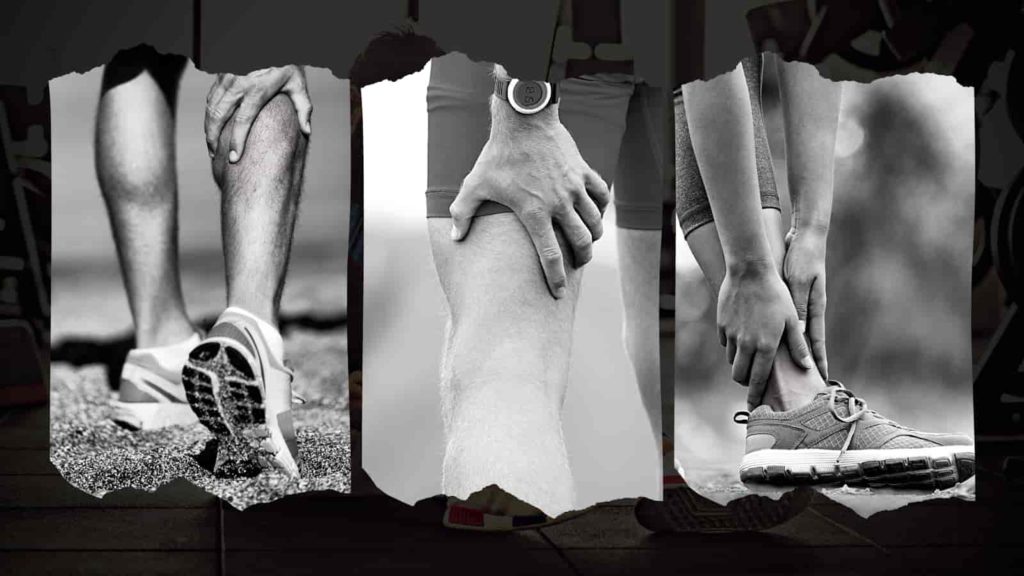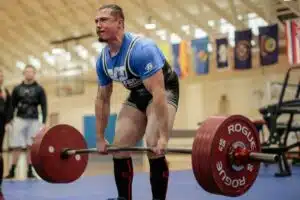Sport is healthy, strengthens, and releases endorphins. That is undisputed. However, sport also carries a certain risk, as it can lead to injuries. Anyone who does sports regularly is always exposed to a certain risk. From time to time, sports injuries can occur during training. In this article, you will get an overview of the most common sports injuries and tips on what to do in such cases. We also give you some advice on how to properly prepare for training to minimize the risk of injury.
Inappropriate sports equipment The wrong sports shoes, even the wrong size, can promote sprains, slips, and the like and thus promote tendon strains or tendon ruptures, which are among the most common sports injuries. Inadequate protective measures – if you don’t have the right protective equipment, the risk of injuring the relevant parts of your body naturally increases.
No warm-up or insufficient warm-up Anyone who does not warm up sufficiently is also affected by an increased risk of injury in sport, as muscles and ligaments are more likely to be pulled or torn when subjected to sudden stress. Incorrect movement sequences If certain movements in sports are performed poorly or incorrectly, this can strain the wrong muscles or tendons, which can lead to injuries such as a sprain or overstretching.
Overestimating one’s own performance A generally poor level of fitness, a high willingness to take risks, or ignoring one’s own stress limits can also often lead to sports injuries.

Proper Preparation Before Sport
Before you start training, you should definitely get the right equipment for your sport. For example, a well-fitting helmet that protects you in the event of a fall is an absolute must when cycling or skiing. The legs are particularly stressed when playing basketball, jogging, or football, which is why you should buy a well-fitting shoe for the respective sport that gives you a secure footing. This stabilizes your foot and reduces the risk of twisting. If you are out and about with inline skates, you should definitely not do without your helmet and also get protectors for your hands, elbows, and knees. These protect you from unpleasant abrasions and bruises or worse injuries in the event of a fall. And you should also protect your knees from bruises with knee pads when playing volleyball.
In order to reduce the risk of injury, it is also very important that you warm up and stretch yourself sufficiently before exercising so that the muscles, ligaments, and tendons are prepared for the strain. If you have already had a sports injury, it may make sense to stabilize the affected area with tape so that it is particularly protected.
Last but not least, you should think about your training status before exercising and adapt your training accordingly. If the intensity is too high or the duration of the training session is too long, the body will be overwhelmed and tired, which increases the risk of injury.
If you follow these tips, you will be very well prepared for your next sports session. However, the risk of injuring yourself during sport can never be completely ruled out, since unfortunate coincidences or the influence of other athletes or opponents can also lead to sports injuries, over which you have no influence. This is the case, for example, with accidents in soccer or handball.

The Most Common Injuries In Sports
Sports injuries can be caused by acute events such as a dislocation, a fall, or a collision with other athletes. But too much training or incorrect movement sequences can also put too much strain on muscles and ligaments, which can lead to painful injuries.
-
Muscle Strain
A muscle strain often occurs when a muscle is suddenly subjected to excessive strain or is overstretched. This is particularly common in the thigh and calf muscles. You can recognize a muscle strain by the pulling pain that usually spreads slowly at first and gradually becomes so severe that the movement can no longer be carried out. Stretching or tensing the affected muscle then leads to pain and the tense feeling does not diminish even with relaxation exercises or massages. As mentioned above, the causes of a muscle strain are a lack of or insufficient warm-up, unsuitable shoes, or overexertion of muscles that are already tired.
Since the affected muscle has been overstretched in the event of a strain, this sports injury does not result in any tissue damage. Nevertheless, in this case, you should rest the muscle and only start exercising again when the strain has completely healed, otherwise, the muscle fibers can tear completely. It can take up to a week for a muscle strain to heal.
-
Hamstring Tear
As the name suggests, a muscle fiber tear tears one or more fibers in a muscle. More severe muscle damage is referred to as a muscle bundle tear or even a muscle tear. When a muscle bundle tears, the entire muscle fiber bundle tears, and when muscle tears, the entire muscle is severed. As a result, the muscle is no longer functional. Bruising is also common. These injuries are caused by straining the muscles too much. In concrete terms, this means that the muscle is subjected to a force that the muscle cannot withstand, as it is greater than the force of the muscle itself. This causes the affected tissue to tear. This can happen especially if you stop suddenly and sharply or change direction very quickly.
These injuries are noticeable through a stabbing pain and the movement can no longer be carried out. In addition, the affected muscle can no longer be fully loaded and the affected tissue swells and often bruises. In order to prevent a muscle fiber rupture or even more serious muscle injuries, you should – as already mentioned – stretch and warm up sufficiently before exercising. The right footwear also protects you from injuries. You should also adapt the training to your current fitness level because tired muscles are more susceptible to sports injuries. Also, be careful with previous injuries: You should definitely let them heal completely before you start training again.
-
Sprain
Another typical sports injury is a sprain or sprain. This often occurs in sports that involve fast, powerful movements with the legs. With this type of injury, the ligaments or joint capsules are affected. This is particularly common in the ankle, knee, or wrist. The most common cause of a sprain is twisting of the joint. The pull on the ligaments becomes too strong, which is why they are overstretched. Since the ligaments serve to stabilize the joints and guide movement, a severe ligament injury can lead to joint instability.
Since a sprain is often difficult to distinguish from a ligament strain or a ligament tear, the term “sprain” is also used more broadly in sports medicine and a ligament strain or a ligament tear is defined as a subtype of a sprain. Depending on the severity of the injury, these are divided into three different forms: A mild sprain (Grade 1) overstretches the ligaments without causing instability or structural damage to the ligaments. Ligament strain (grade 2) is when the ligaments have been severely overstretched or even a partial tear of one or more ligaments has occurred. The stability of the joint is nevertheless guaranteed. This is no longer the case with a torn ligament (grade 3). When one or more ligaments tear, this leads to instability of the joint.
Depending on the severity of the injury, you should also have a sprain evaluated by a doctor. If this sports injury is not treated correctly, there is a risk of further distortions and the ligaments wear out over time. You should always let a sprain heal completely before you start exercising again. When you get back into it, you should start with a very low load and gradually increase it.
Bottom Line
Now you know the typical injuries that can occur during sports. Bone fractures or the like often do not occur during a sports session, but ligament injuries do. But with the tips mentioned, you can prepare yourself properly for training in order to avoid these sports injuries as far as possible.












